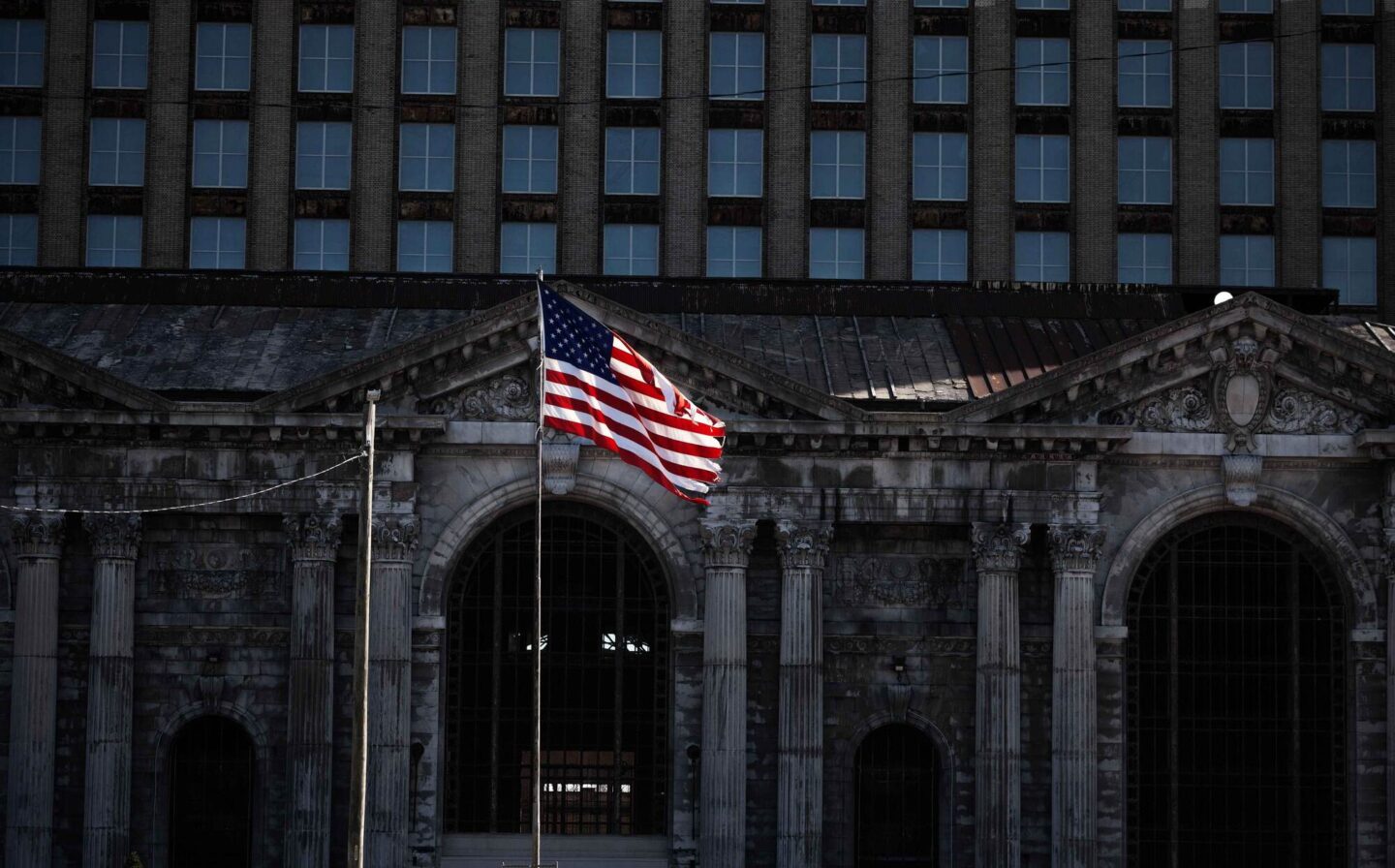
A TIME for visual simplicity and clarity amid the chaos
Responsible for TIME magazine’s iconic covers, D W Pine explores his creative process and shares insights on how to cut through the noise and make an impact....

Published May 16, 2025 in Innovation • 8 min read • 
The economic vibrancy of Silicon Valley has inspired generations of local economic developers seeking to copy its recipe for success. The once-sleepy suburban “valley of heart’s delight” was transformed into the center of the global tech economy, with perhaps the highest concentration of wealth in human history.
Any geographic feature can be drafted into this effort to replicate this transformation: Silicon Slopes (Utah), Glen (Scotland), Prairie (across the US), Gulch (California), and more. All are premised on the idea that clustered, high-growth entrepreneurship, typically funded by venture capital, is the shining path to a richer future and a more secure tax base.
These efforts almost inevitably fail. Few have attracted vast pools of venture capital, and none have matched the Silicon Valley model’s exuberant success: the San Francisco Bay area habitually tops the league table for VC, followed by New York and Boston, while Austin has managed to stake a claim as a plausible alternative tech hub.
But what if venture capital is not the essential ingredient for economic transformation through vibrant entrepreneurship? What if there are more enduring recipes that draw on local factors? This idea is being tested in communities across the US – including Detroit, the birthplace of 20th-century mass production.
There is not just one path to growth, as Suntae Kim, Assistant Professor of Management and Organization at the Johns Hopkins Carey Business School, and others have shown. A community’s assets – not a trendy model nor return-hungry venture capital – can prove a powerful source of economic vitality.
Detroit was the original Silicon Valley in the first decades of the 20th century. A city of a quarter of a million residents strategically located on a river across from Canada, it was home to producers of railroad cars and locomotives, carriages, bicycles, and a large sector of machine shops. Local innovators such as Ransom E Olds and Henry Ford were able to build auto companies out of these locally available parts, and their early success attracted suppliers and competitors that quickly established Detroit as the hub of an essential new industry. The dense ecosystem of suppliers germinated hundreds of competitors.
Ford launched the moving assembly line in 1913, and the astonishingly high employee turnover prompted by its mind-numbing repetitive jobs led the company to offer wages of $5 per day early the following year. Such high wages for unskilled work attracted migrants from around the world and underwrote the Great Migration from America’s South. By 1930, Detroit had over 1.5 million residents, making it America’s fourth-largest city – a place of vast wealth and diversity and all the creativity and tensions these bring.
Detroit’s rich cultural diversity was not matched by industrial diversity, however. The economic mobility offered by employment at a handful of industrial giants created a strong gravitational pull, and the opportunities for entrepreneurs tended toward efforts to supply the dominant local industry. Detroit was effectively a one-trick town, and it would pay the price for its monolithism.

By the time the city reached its peak population of 1.8 million in 1950, the auto industry was already scheming to disperse production to lower-cost venues with weaker labor organization. Between 1948 and 1963, Detroit lost 130,000 jobs, primarily due to restructuring in the auto industry. The growth of international competitors and the oil shocks of the 1970s left the city’s automakers reeling and prompted a decades-long decline in population: by 2020, Detroit had roughly 640,000 residents, about the same as when the assembly lines fired up a century earlier.
The abandoned Michigan Central train station, built in 1913, became a symbol of economic decline and urban decay.
What could replace the auto industry and salvage the Motor City’s economy? Despite its industrial history and the dominance of giant automotive companies, Detroit evolved a distinctive entrepreneurial terroir during its troubled times. Those who spend time in the city know that everyone seems to have a side hustle – a business (or two or three) they work on during evenings and weekends. Moreover, the vibe is one of mutual assistance rather than competition: entrepreneurs help each other out, knowing nobody else will. The defiant T-shirt slogan “Detroit vs. Everybody” might be read by outsiders as hostility, but within the city, it’s about collective resilience in the face of endless challenges. When big industry left Detroit, it was left to the people to improvise alternatives.
Kim went deep into the weeds to understand this system. He spent years in residence at two very different business incubators: ACCEL, a Y Combinator-style accelerator (which typically provides seed funding and networking connections), and GREEN, an alternative incubator aimed at growing local enterprises for community benefit (ACCEL and GREEN are pseudonyms). He followed four startups at each site, attending meetings and pitches, interviewing founders, employees, and funders, and closely watching how these enterprises navigated their early months.
What he found was stark: startups growing up in the Y Combinator model almost inevitably moved away to access venture capital and rapid “scaling up” opportunities, leaving behind little benefit for the city. In contrast, those at GREEN grew more like an oak tree, “scaling deep” to set down strong roots that tied it to the community. Kim and his co-author, Anna Kim, tracked the subsequent performance of these firms and wrote a series of articles on what they mean for entrepreneurial ecosystems.
The lesson seems clear: if the aim of ecosystem builders is local economic vibrancy and uplift, then the Silicon Valley model is likely to be a bust. I have pointed out in previous columns that VC-backed firms don’t create jobs even if they go public – and the vast majority never get to IPO. Adding a couple more millionaires to the local tax rolls might be nice but it will not revive the local economy. If not the VC model, then what?
A recurring theme of this column is “Nikefication” and what it means for business. The massive vertical integration pioneered by Ford in the 20th century has been replaced by relentless vertical disintegration in the 21st. All the parts of an enterprise – supplies, assembly, software services, distribution, even labor – are like Lego bricks that can be assembled into a pop-up enterprise. Even auto startups in the US increasingly look more like Nike than General Motors, with some foregoing production altogether in favor of design and marketing.
The COVID-19 pandemic nudged millions of prospective entrepreneurs to take advantage of this new situation. In the US, 19 million founders filed the paperwork to start a new business after 2020, of which five million expected to have employees – a reversal of a 40-year decline in startup rates. These businesses tended to be tiny, often headquartered in suburban homes and not in downtown cores. Moreover, their asset-light model requires much less capital than old-timey enterprises – no need for venture capital to launch a pop-up.

“Michigan Central is the venue for Black Tech Saturdays, a remarkable community of entrepreneurs, professionals, funders, and community members building new businesses and tech capabilities with a strong culture of mutual support.”
It may be much cheaper to start a new business now, with access to inputs from around the world, but what happens to “terroir”? What might Detroit – or any other city – do for a placeless snap-together enterprise?
Detroit’s entrepreneurial revival offers clues to what one model for a vibrant local ecosystem might look like. For one thing, after over a century, Ford is back to its birthplace, having revived the once-abandoned, iconic Michigan Central train station and created a lustrous Beaux-Arts showpiece downtown. Next door is the home of Newlab, an incubator focused on mobility and energy and home to over 100 startups.
Michigan Central is also the venue for Black Tech Saturdays, a remarkable community of entrepreneurs, professionals, funders, and community members building new businesses and tech capabilities with a strong culture of mutual support. On any given Saturday, hundreds of Detroiters gather to make connections, gain insights, build community, receive or offer coaching, and be inspired by the success of their neighbors.
Detroit has also been experimenting with new and different ways of funding business. Venture capital continues to be heavily concentrated in America’s coastal states – particularly California, New York, and Massachusetts. As an alternative, online investment platforms such as Honeycomb Credit and Wefunder allow small businesses in the middle to raise capital from local investors. The SEC’s Regulation Crowd Funding (Reg CF) enables enterprises to raise up to $5m and allows “non-accredited investors” (essentially, not-rich people such as a business’s customers and neighbors) to participate. These non-accredited investors make up the overwhelming majority of the population. In addition to standard loans and equity, alternative formats such as revenue-sharing agreements can provide more flexibility than traditional loans. Detroit is also home to several Community Development Financial Institutions (CDFIs) and is piloting vehicles such as the Diversified Community Investment Fund. The digital revolution is catalyzing a diversity of new streams to fund business that better fit the aim of scaling deep rather than scaling up.
The enterprises populating Detroit are often very different from the VC-funded startups intended to metastasize quickly through the most generic recipe possible. Detroit’s emerging enterprises are more like the “GREEN-style” entrepreneurs shown by Kim and others to grow into community-positive oak trees that can drive local uplift. They might be JustAir, a platform founded by Darren Riley that is placing a network of air quality monitors across the city to provide critical data for residents and health professionals. Or Pingree Detroit, a worker-owned cooperative launched by Jarret Schlaff that employs military veterans to create shoes and other goods from leather cast off by the auto industry, and which raised part of its capital via Honeycomb Credit (including from me). Or Empowerment Plan, founded by Veronika Scott to provide employment and skills training for women experiencing homelessness by manufacturing coats that turn into sleeping bags – also intended to help unhoused people. Or Chening Duker’s Pluck.eco, aiming to make zero-emission delivery affordable for local stores by solving the “last mile” transit problem.
Given its heritage of design, its entrepreneurial culture of mutual support, and its willingness to experiment with alternative finance, will Detroit be the new model for a more sustainable 21st-century form of enterprise?

April 22, 2025 • by D W Pine in Innovation
Responsible for TIME magazine’s iconic covers, D W Pine explores his creative process and shares insights on how to cut through the noise and make an impact....

April 7, 2025 • by Gopi Kallayil in Innovation
Used boldly and responsibly, AI could drive powerful positive change, argues Google’s AI business strategist....
 Audio available
Audio available
March 28, 2025 • by Vanina Farber in Innovation
Women’s financial security, career progression, and personal safety have long been shaped by systems that overlook their realities. 'Lifepreneurs' – entrepreneurs who innovate from lived experience – are challenging these defaults....

February 6, 2025 • by Bridget McCormack, Jen Leonard in Innovation
Two senior lawyers give their verdict on the American Arbitration Association’s efforts to harness the power of generative AI. They explain why incumbent organizations must seize the opportunities without delay....
 Audio available
Audio availableExplore first person business intelligence from top minds curated for a global executive audience